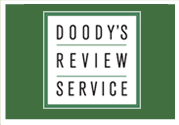|
|
|
eBook/Digital Version available from:
|
 Score: 91
Score: 91 |
 |
| Reshaping Health Systems: What Drives Health Care and How You Can Change It |
 |
ISBN: 978-1-975221-23-2,
330 pages,
Soft Cover
ISBN-10: 1-975221-23-0 |
 |
| Copyright: |
2025 |
 |
| Edition: |
1st |
 |
| Author: |
Liao, Joshua M., MD, MSc; Staloff, Jonathan A., MD, MSc; Joo, Joseph H., MD, MS |
 |
|
Specialties:
|
Health Systems Science
, Health Care Administration |
 |
| Publisher: |
Wolters Kluwer |
|
Two Commerce Square |
|
2001 Market Street |
|
Philadelphia, PA 19103 |
|
UNITED STATES |
|
P: 800-638-3030
F: 301-223-2400 |
|
http://www.lww.com |
 |
| List Price: |
$79.99 |
 |
| Google: |
|
|
 |
|
|
|
|
At A Glance
|
Reshaping Health Systems: What Drives Health Care and How You Can Change It illuminates how forces in the health care system ("systems factors") impact patient care before outlining strategies ("systems solutions") to enact change and improve care delivery. Using a case-based format that mirrors real-world scenarios involving patients and clinicians, Drs. Liao, Staloff, and Joo impart foundational health systems knowledge and skills in ways that are intuitive, enjoyable, and accessible for clinicians and health system leaders alike. Learn more and order here.
|
|
Reviewer:
|
Conrad Flick,
MD
(Family Medicine Associates of Raleigh)
|
 |
|
Range
|
Question
|
Score
|
| 1-10 |
Are the author's objectives met? |
8 |
| 1-10 |
Rate the worthiness of those objectives. |
10 |
| 1-5 |
Is this written at an appropriate level? |
5 |
| 1-5 |
Is there significant duplication? (1=significant, 5=insignificant) |
4 |
| 1-5 |
Are there significant omissions? (1=significant, 5=insignificant) |
4 |
| 1-5 |
Rate the authority of the authors. |
4 |
| 1-5 |
Are there sufficient illustrations? |
5 |
| 1-5 |
Rate the pedagogic value of the illustrations. |
4 |
| 1-5 |
Rate the print quality of the illustrations. |
5 |
| 1-5 |
Are there sufficient references? |
5 |
| 1-5 |
Rate the currency of the references. |
5 |
| 1-5 |
Rate the pertinence of the references. |
5 |
| 1-5 |
Rate the helpfulness of the index. |
5 |
| 1-5 |
If important in this specialty, rate the physical appearance of the book |
N/A |
| 1-10 |
Is this a worthwhile contribution to the field? |
8 |
| 1-10 |
If this is a 2nd or later edition, is this new edition needed? |
N/A |
|
 |
|
Reviewer:
|
Conrad Flick,
MD
(Family Medicine Associates of Raleigh)
|
 |
|
Description
|
| This uniquely written book describes what drives and influences the current healthcare system, outlines the impacts on patients and providers, and offers some potential options and solutions. Patient scenarios are used to highlight the challenges that can occur at each level of our system, from first contact with a care provider to the complexities of a fragmented and profit driven healthcare enterprise. |
 |
|
Purpose
|
| This book aims to reshape local healthcare systems by using patient clinical scenarios to highlight glaring inefficiencies and problems that arise at every level of care. It offers a number of models that can be instituted or used to improve care when and where it is provided. While it may not fix all of health care or align the system to always put patients first, the book can help individual providers, clinics, hospitals, and local organizations improve the care they provide and improve the interactions and satisfaction for all involved. |
 |
|
Audience
|
| The book's target audience is any clinician, team member, or leader in health care, but the book will benefit anyone considering a job within the healthcare field and is a must read for all healthcare students before they reach the level of patient care and contact. The authors are physicians with significant experience in caring for patients, but also with direct knowledge in healthcare policy and decision making and medical education. They bring those areas together using examples of proven methods for change in a unique way that will serve as a great primer for those starting out or a framework for those with many years of experience in health care or medicine wishing to institute transformations within their own office or system. |
 |
|
Features
|
| The book is divided into two sections. The first addresses the problems patients and clinicians will experience in the current system and the second addresses clinicians looking to change their system. This is an excellent approach, and I thoroughly enjoyed the use of patient scenarios to bring the contents and message to life for all clinicians, healthcare workers, leaders, and patients. It breaks the complexities and problems of the U.S. healthcare system down and explains the issues in very simple terms. The book makes its message clear to anyone with a working understanding of the healthcare system and gives hope that they can make a meaningful and positive impact not only on their clinics, hospital, or organization, but also for patients. |
 |
|
Assessment
|
| This is a well-thought-out and well-written book that will appeal to clinicians, healthcare workers, and administrators who wish to better understand health care's systemic problems and how they can affect change within their own clinics, hospitals, and healthcare systems. Until the entire system really puts patients before profits and U.S. health care transforms, small and incremental changes to serve patients, local providers, and communities are the best bet for local systems to improve. This book explains the problems clearly with real life scenarios, offering tangible ways for those looking to influence change to be able to do so. |
 |
|
|
|
|
|
|
|
